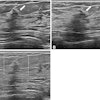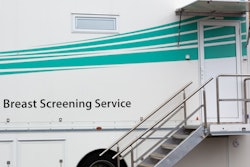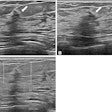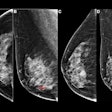Multidisciplinary breast cancer care improves time-to-treatment at safety net hospitals, according to research presented May 1 at the American Society of Breast Surgeons (ASBS) annual meeting in Las Vegas, NV.
In her presentation, Anna Kobzeva-Herzog, MD, from Boston University Medical Center in Massachusetts, showed that a multidisciplinary breast care clinic consisting of radiologists, radiation oncologists, and surgeons can help shorten the time to initial breast cancer treatment.
“This concept…underscores the significant relationship between multidisciplinary care and patient survival,” Kobzeva-Herzog said.
Medical experts have called for multidisciplinary collaborations among specialties, saying that leveraging the unique skills and insights from each specialty could improve patient care.
Multidisciplinary breast care clinic models have been employed in hospital systems and have been shown to reduce cancer-specific treatment delays and mortality. However, Kobzeva-Herzog said that the effect of this approach has not been evaluated on vulnerable patients receiving care from safety net hospitals.
The researchers studied how visits to a newly implemented multidisciplinary breast care clinic, implemented in 2019, affected time to treatment for patients at a safety net hospital. With this model, patients need to see only one specialist rather than several specialists separately.
The study included data from 734 women with an average age of 58.5 years. Of the total, 45.8% were Black and 48.4% were covered by Medicaid. Also, of the total, 28.9% of the women were seen in the multidisciplinary breast care clinic. These women were younger (55.7 years vs. 59.6 years, p < 0.001) and were less likely to be of Hispanic ethnicity (18.4% vs. 27.6%, p = 0.01) compared with women not seen in the clinic.
The researchers reported that most of the women seen in the multidisciplinary clinic had invasive breast cancer diagnoses as opposed to ductal carcinoma in situ (DCIS). And women in this clinic had shorter time to initial treatment, more commonly underwent chemotherapy, and less often underwent surgery compared with women who did not attend the multidisciplinary clinic.
Comparison between breast cancer patients seen or not seen in multidisciplinary care clinic | |||
Measure | Non-multidisciplinary clinic | Multidisciplinary clinic | p-value |
Invasive breast cancer diagnoses | 60.3% | 86.8% | < 0.001 |
Time to initial treatment | 46.9 days | 35 days | < 0.001 |
Chemotherapy | 11.5% | 48.6% | < 0.001 |
Surgery as first treatment method | 77.2% | 43.4% | < 0.001 |
The team also found no statistically significant difference in time to first appointment between the two cohorts.
On subgroup analysis of chemotherapy-first patients, women seen in the multidisciplinary clinic had shorter time to first appointment (10.2 days vs. 18.1 days, p = 0.011) and decreased time to initial treatment (27.1 days vs. 42.6 days, p < 0.001) compared with the traditional outpatient model. The team found no statistically significant associations between surgery-first patients seen in the multidisciplinary clinic and time to first appointment or time to initial treatment.
And on multivariable analysis, invasive histology showed an association with being seen in the multidisciplinary clinic (odds ratio [OR], 4.29, with 1 as reference; p < 0.001). Hispanic ethnicity (OR, 0.55; p = 0.014) and older age (OR, 0.98; p = 0.021) were less often tied to being seen in this clinic.
“Moving forward, the multidisciplinary breast cancer clinic can serve as a model to reduce disparities in vulnerable patient populations,” Kobzeva-Herzog said.



















